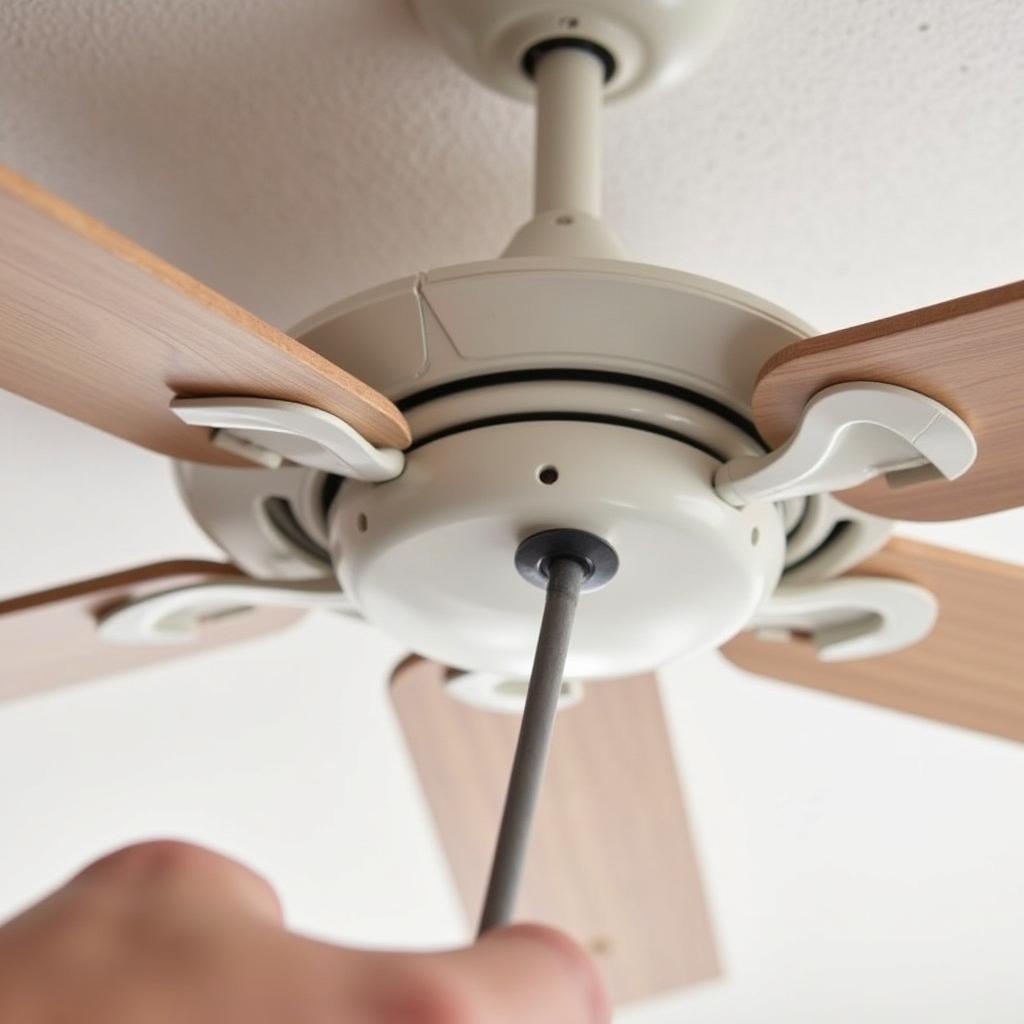Ceiling fans, those unsung heroes of summer, can sometimes fail to live up to their breezy potential. Whether your fan refuses to spin, makes strange noises, or simply doesn’t move enough air, don’t despair! Many common ceiling fan issues can be solved with a little troubleshooting.
Why Won’t My Ceiling Fan Turn On?
Before you call an electrician, consider these common culprits behind a completely unresponsive fan:
- Power Supply Issues: It might seem obvious, but start with the basics. Ensure the fan is properly plugged in or the circuit breaker hasn’t tripped. Test the outlet with another device to confirm power is flowing.
- Faulty Wall Switch: Sometimes the problem isn’t the fan itself, but the switch controlling it. A worn-out or broken switch can prevent power from reaching the fan.
- Loose Connections: Over time, the wiring within the fan’s housing or at the switch can become loose. Tightening these connections might get your fan spinning again.
My Ceiling Fan is Making Noise – What’s Wrong?
A noisy ceiling fan can be more than just an annoyance; it’s often a sign of a problem requiring attention. Here are some potential causes:
- Dust and Debris Buildup: Fans naturally accumulate dust on their blades and motor housing, which can lead to imbalances and noise. Regular cleaning can often silence a noisy fan.
- Loose Screws: Check that all screws securing the blades, blade holders, and the fan’s mounting bracket are tight. Loose screws can cause vibrations and rattling.
- Worn-Out Motor Bearings: Over time, the bearings within the fan’s motor can wear out, leading to grinding or humming noises. If this is the case, the motor might need replacement.
My Ceiling Fan Isn’t Moving Enough Air – What Can I Do?
A ceiling fan that spins but doesn’t provide adequate airflow might be suffering from one of these issues:
- Incorrect Blade Pitch: The angle of the fan blades, known as the pitch, is crucial for air movement. Blades set at too shallow an angle won’t push enough air. Consult your fan’s manual for the correct pitch and how to adjust it.
- Wrong Direction: Ceiling fans should rotate counter-clockwise in summer to push air down and clockwise in winter to circulate warm air. Ensure your fan’s direction is set appropriately for the season.
- Fan Size and Room Size Mismatch: A fan that’s too small for the room won’t be able to circulate air effectively. Make sure you’ve chosen a fan with the appropriate blade span for your room’s dimensions.
 Adjusting the Pitch of Ceiling Fan Blades
Adjusting the Pitch of Ceiling Fan Blades
When to Call a Professional
While many ceiling fan issues are DIY-friendly, some situations call for professional help. Contact a qualified electrician if:
- You’re uncomfortable working with electrical components.
- You’ve tried troubleshooting but the problem persists.
- You notice signs of electrical damage, such as burnt wires or melted insulation.
Conclusion
Troubleshooting ceiling fans that don’t perform as expected often comes down to addressing simple issues. By methodically checking power, connections, and components, you can often restore your fan to its quiet, breezy glory. Remember, safety first! If you’re unsure about any aspect of ceiling fan repair, it’s always best to consult a professional electrician.


